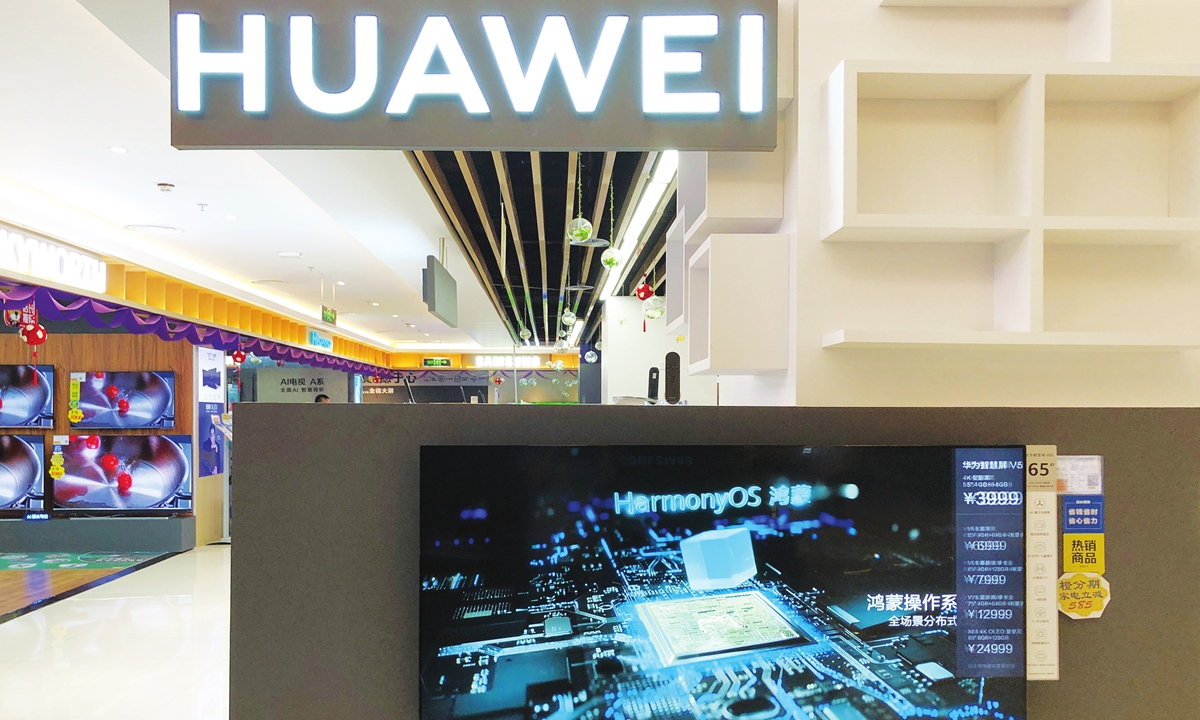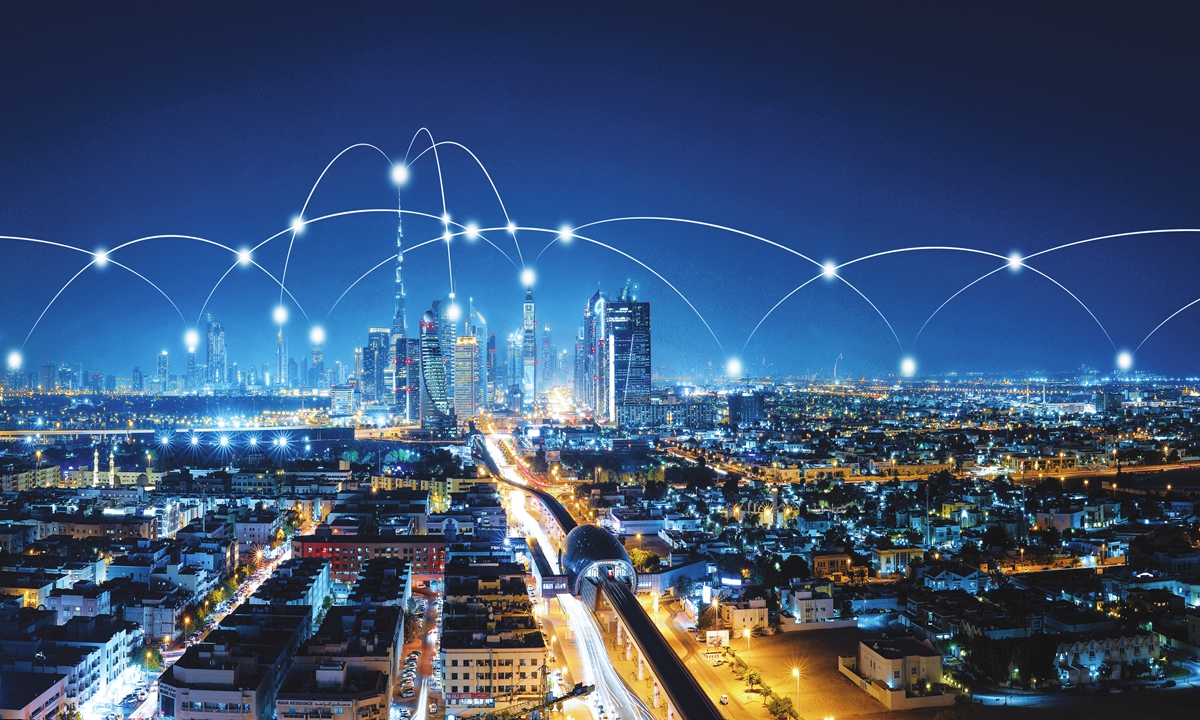Huawei’s HarmonyOS, a system to divide and define the era of IoT
Source: Global Times Published: 2020/12/27 17:30:14
The beta version of Huawei HarmonyOS for mobile phone developers was released on December 16, fulfilling Huawei's promise of technological innovation and its development plan announced at the Huawei Developer Conference in September.

Wang Chenglu, president of Huawei's consumer business software department, said that HarmonyOS is an operating system for the era of the Internet of Things (IoT). It will bring users more application services and smart life experiences, creating a huge market for a wide range of industry upgrades.
History of IoT
In the 1980s, several students at Carnegie Mellon University connected the Coke vending machine at the entrance of the dormitory to the Internet, so that they could remotely check whether there was Coke in storage and whether the Coke was iced enough without leaving the house. That brought the embryonic form of the IoT into shape.
However, the development of the IoT has been slow. Data shows that the network connection rate of smart devices is less than 20 percent, and the app installation rate in smart home furniture is less than 10 percent.
The main reason for this is that communication technology and hardware equipment cannot support the effective communication of a large number of networked devices. The current development stage of artificial intelligence and big data are still the constraints for the deployment of the IoT.

However, the ecology formed by so many smart devices is very fragmented and cannot work with each other to bring a good experience to users. Different terminal devices have their own independent operating systems, and communication is very complicated.
Operation system in sync with IoT
HarmonyOS is the operating system aimed at taking full advantage of the IoT. It can be used not only on smart phones, but also on various smart terminal devices such as TVs, car machines, wearable products, etc.
In the past, the hardware and software of the same mobile phone would never change. Now, HarmonyOS will create a revolution as it aims to free hardware from the limitations of physical entities, allowing multiple physically separated terminals to merge into a "super terminal." HarmonyOS can bring the most suitable devices depending on users' demand, by combining the software and hardware capabilities of different devices.
HarmonyOS no longer exists in isolation in different equipment, but takes people as the center and merges equipment to bring the best experience.

Ordinary home appliances without a screen can be "screened" in seconds through other devices, and cooking appliances can be monitored through a smartphone. Home appliances will also actively communicate with users to remind them of any problems with their operating status.
In the ecological construction of HarmonyOS, the most difficult thing is to get the support of hardware developers and manufacturers. But increasingly for them, the operating system will bring more opportunities for industrial upgrades.
For instance, after an electric kettle is equipped with the operating system, it becomes a smart kettle that is "visible" and can "talk," which can command a higher price.
HarmonyOS is still in its infancy, but it has attracted more than 120 companies including JD.com, UnionPay QuickPass, Youku, Didi, Baidu Maps and WPS. It has also attracted more than 20 home appliance manufacturing giants to be deeply engaged in the construction of the IoT ecosystem, including Midea, Joyoung and Boss Electronics.
Newspaper headline: A revolutionary upgrade

A demo video of the HarmonyOS is shown on Huawei's smart screen at a chain shop of electronics retailer Suning.com on Chaoyang Road, Beijing on July 17. Photo: VCG
The HarmonyOS, which supports various terminal devices, is growing rapidly in line with Huawei's plan. Starting from September 10, Huawei has been releasing beta versions of the system for large screens, watches, and cars for application developers. It also provided SDK (software development kit), development documents, development tools and simulators for mobile phone developers to create mobile applications within HarmonyOS. It is expected that Huawei's smartphones will be upgraded to support Harmony 2.0 in 2021.Wang Chenglu, president of Huawei's consumer business software department, said that HarmonyOS is an operating system for the era of the Internet of Things (IoT). It will bring users more application services and smart life experiences, creating a huge market for a wide range of industry upgrades.
History of IoT
In the 1980s, several students at Carnegie Mellon University connected the Coke vending machine at the entrance of the dormitory to the Internet, so that they could remotely check whether there was Coke in storage and whether the Coke was iced enough without leaving the house. That brought the embryonic form of the IoT into shape.
However, the development of the IoT has been slow. Data shows that the network connection rate of smart devices is less than 20 percent, and the app installation rate in smart home furniture is less than 10 percent.
The main reason for this is that communication technology and hardware equipment cannot support the effective communication of a large number of networked devices. The current development stage of artificial intelligence and big data are still the constraints for the deployment of the IoT.

IoT applied in cities Illustrations: VCG
However, in recent years, with the rapid upgrade of smart phones and other hardware, as well as the popularization of 5G and artificial intelligence, the IoT is gradually becoming a reality. According to Huawei's Global Industry Outlook report, by 2025, the number of personal smart terminals is expected to reach 40 billion, global connections will reach 100 billion, and the world's smart watches, glasses and other wearable devices will reach 8 billion. Statistic data also shows that from 2015 to 2025, the number of smart devices per capita will increase significantly from two to nine.However, the ecology formed by so many smart devices is very fragmented and cannot work with each other to bring a good experience to users. Different terminal devices have their own independent operating systems, and communication is very complicated.
Operation system in sync with IoT
HarmonyOS is the operating system aimed at taking full advantage of the IoT. It can be used not only on smart phones, but also on various smart terminal devices such as TVs, car machines, wearable products, etc.
In the past, the hardware and software of the same mobile phone would never change. Now, HarmonyOS will create a revolution as it aims to free hardware from the limitations of physical entities, allowing multiple physically separated terminals to merge into a "super terminal." HarmonyOS can bring the most suitable devices depending on users' demand, by combining the software and hardware capabilities of different devices.
HarmonyOS no longer exists in isolation in different equipment, but takes people as the center and merges equipment to bring the best experience.

IoT applied in cities
For example, when a user starts navigating with a mobile phone, the navigation will automatically sync to the car screen after the user enters the car. After the user gets out of the car, the navigation will automatically switch to the watch, allowing the same application to seamlessly connect among the phone, car, and watch.Ordinary home appliances without a screen can be "screened" in seconds through other devices, and cooking appliances can be monitored through a smartphone. Home appliances will also actively communicate with users to remind them of any problems with their operating status.
In the ecological construction of HarmonyOS, the most difficult thing is to get the support of hardware developers and manufacturers. But increasingly for them, the operating system will bring more opportunities for industrial upgrades.
For instance, after an electric kettle is equipped with the operating system, it becomes a smart kettle that is "visible" and can "talk," which can command a higher price.
HarmonyOS is still in its infancy, but it has attracted more than 120 companies including JD.com, UnionPay QuickPass, Youku, Didi, Baidu Maps and WPS. It has also attracted more than 20 home appliance manufacturing giants to be deeply engaged in the construction of the IoT ecosystem, including Midea, Joyoung and Boss Electronics.
Newspaper headline: A revolutionary upgrade
Posted in: PRESS RELEASE